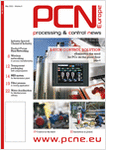Sunday, September 28, 2008
Display problem ? Click HERE
Recommended :
- Tips on Succession in FREE Subscription
- Subscribe FREE - Processing & Control News

The important, function, added security and implementation of Locked Open (LO) and Locked Close block valves has been briefly discussed in "Locked Valve Increases Security, Reliability & Integrity". Similarly Car-sealed discussed in "How CSO and CSC helps ?". This post will discuss the way to implement a key interlocking system (key trapped type) between block valves so that they can be open or close in the pre-planned manner and to avoid mal-operation by operators. The example are typically in single Pressure Relief Valve (PSV) and Dual PSVs arrangement.
- Tips on Succession in FREE Subscription
- Subscribe FREE - Processing & Control News

The important, function, added security and implementation of Locked Open (LO) and Locked Close block valves has been briefly discussed in "Locked Valve Increases Security, Reliability & Integrity". Similarly Car-sealed discussed in "How CSO and CSC helps ?". This post will discuss the way to implement a key interlocking system (key trapped type) between block valves so that they can be open or close in the pre-planned manner and to avoid mal-operation by operators. The example are typically in single Pressure Relief Valve (PSV) and Dual PSVs arrangement.
Principle
Two important principles in operating these block valves to remove the PSVs for testing and maintenance purpose are :
i) Close inlet block valve before outlet block valve
ii) Open outlet block valve before inlet block valve
iii) Ensure spare PSV's relief valve clear open before close duty PSV inlet & outlet block valves
Single PSV arrangement
Following image is valve and typical key trapped lock arrangement for a single PSV installation.
Normal operation :
i) Inlet and outlet block valves are in OPEN position
ii) Master Key A in cabinet inside control room
iii) Key B and C are located at inlet and outlet valve respectively.
PSV removal operation :
i) Collect key "A" from the control room.
ii) Insert key "A" in to the lock of Inlet block valve and close valve. Once valve in completely close position, key "B" can be released.
iii) Transfer and insert key "B" to lock of Outlet block valve and close valve.
iv) Release key "C" and return to control room to signify complete operation.
PSV re-installation operation :
i) Collect key "C" from the control room.
ii) Insert key "C" in to the lock of Outlet block valve and open valve. Once valve in completely open position, key "B" can be released.
iii) Transfer and insert key "B" to lock of Inlet block valve open valve.
iv) Release key "A" and return to control room to signify complete operation.
Dual PSVs arrangement
Following image is valve arrangement and typical key trapped lock for a Dual PSVs installation.
Normal operation :
i) Inlet and outlet block valves of DUTY PSV are in OPEN position
ii) Inlet block valve of SPARE PSV are in CLOSE position
iii) Outlet block valve of SPARE PSV are in OPEN position
iv) Master Key A in cabinet inside control room
iii) Key B, C, D are located at inlet and outlet valve respectively.
DUTY PSV removal operation :
i) Collect key "A" from the control room.
ii) Insert key "A" in to the lock of SPARE PSV Inlet block valve and open valve. Once valve in completely open position, key "B" can be released.
iii) Transfer and insert key "B" to lock of DUTY PSV Inlet block valve and close valve. Once valve in completely close position, key "C" can be released.
iv) Transfer and insert key "C" to lock of DUTY PSV Outlet block valve and close valve. Once valve in completely close position, key "D" can be released.
v) Release key "D" and return to control room to signify complete operation.
DUTY PSV re-installation operation :
i) Collect key "D" from the control room.
ii) Insert key "D" in to the lock of DUTY PSV Outlet block valve and open valve. Once valve in completely open position, key "C" can be released.
iii) Transfer and insert key "C" to lock of DUTY PSV Inlet block valve and open valve. Once valve in completely open position, key "B" can be released.
iv) Transfer and insert key "B" to lock of SPARE PSV Inlet block valve and close valve. Once valve in completely close position, key "A" can be released.
v) Release key "A" and return to control room to signify complete operation.
SPARE PSV removal operation :
i) Collect key "A" from the control room.
ii) Insert key "A" in to the lock of SPARE PSV Outlet block valve and close valve. Once valve in completely close position, key "D" can be released.
iii) Release key "D" and return to control room to signify complete operation.
SPARE PSV re-installation operation :
i) Collect key "D" from the control room.
ii) Insert key "D" in to the lock of SPARE PSV Outlet block valve and open valve. Once valve in completely open position, key "A" can be released.
iii) Release key "A" and return to control room to signify complete operation.
Related Posts
- Locked / Car-Sealed CLOSE PSV Inlet Isolation Valve ?
- Isolation Valve Position when Spare PSV present
- Concerns & Recommendations on PSV INLET line
- Concerns & Recommendations of PSV Discharge Tail pipe
- How CSO and CSC helps ?
- Locked Valve Increases Security, Reliability & Integrity
Labels: Overpressure Protection, Pressure Relief Device
1 Comments:
Besides these two examples there are much more configuration possible (double inlets, pilot valves, straight to ATM).
For more standard layouts feel free to contact..
frank@netherlocks.com
Post a Comment
Let us know your opinion !!! You can use some HTML tags, such as <b>, <i>, <a>
Subscribe to Post Comments [Atom]
Home:
<< Home